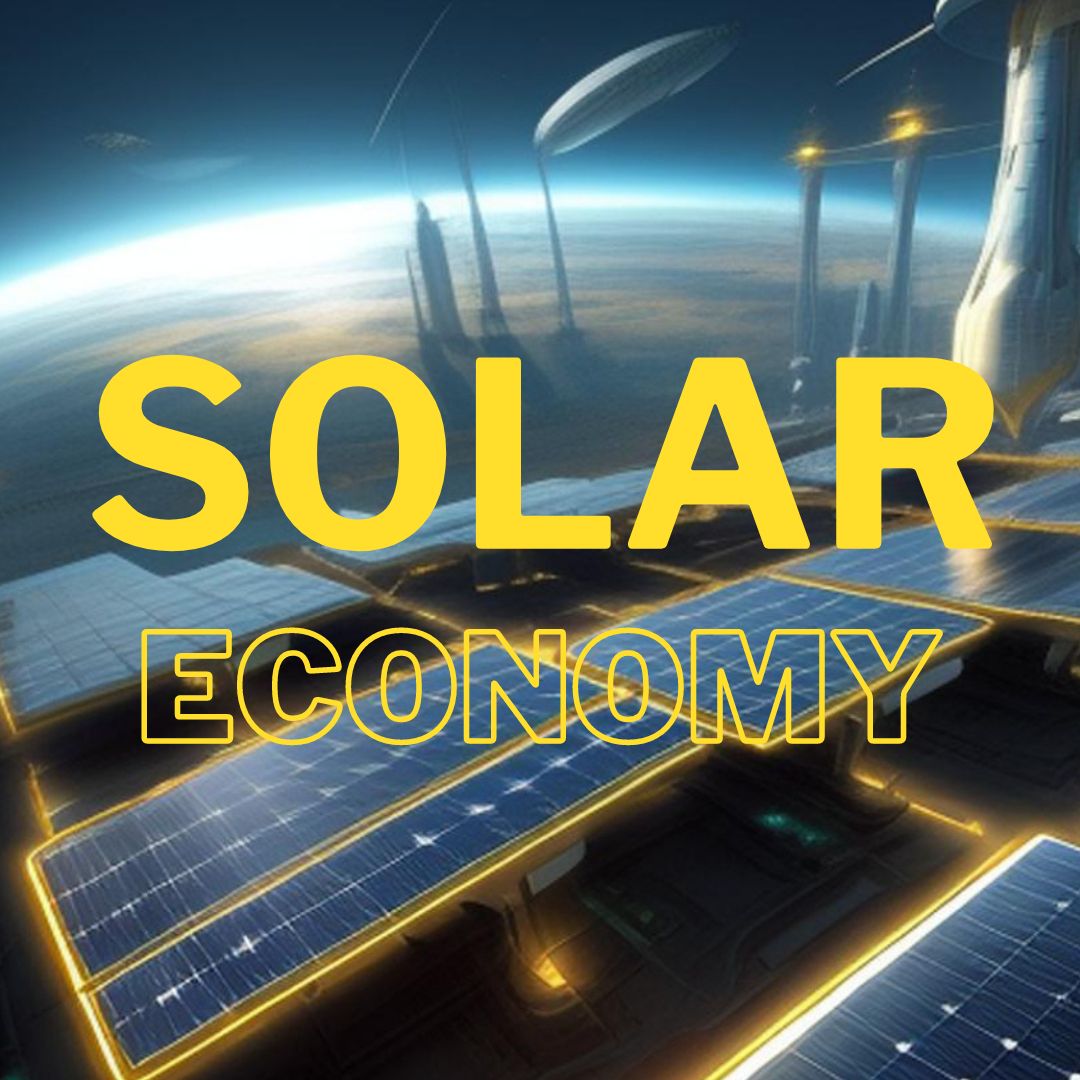The Macro-perspective about Solar Economy
- 5 September 2023 | 362 Views | By Mint2Save

Solar energy is the energy that comes from the sun. One of the easiest to harvest renewable sources, solar energy can be used to generate electricity, heat water, and power vehicles. For its utilization, solar energy uses equipment as simple as a mirror and heating chamber. The mechanical simplicity ensures that anyone with even basic knowledge can have access to this source.
The solar economy is the economic activity that is associated with the production, installation, and use of solar energy. It is a growing industry, with global investment in solar energy increasing by an average of 20% per year.
The Production of Solar Energy
The production of solar energy starts with the conversion of sunlight into electricity. This can be done using photovoltaic (PV) cells or solar thermal collectors. PV cells convert sunlight directly into electricity, while solar thermal collectors use the sun’s heat to heat water or air.
Photovoltaic cells are an amalgamation of various components, that majorly comprise of silicon. When sunlight hits a PV cell, it knocks electrons loose from the semiconductor material. These electrons flow through the cell, creating an electric current.
Green Energy Finance: The Key to a Sustainable Future
Solar thermal collectors are made from materials that absorb heat well, such as metal or glass. When sunlight hits a solar thermal collector, it heats the material, which then transfers the heat to water or air.
The Installation of Solar Energy Systems
Once solar energy is produced, it needs to be installed in a way that it can be used. This can be done by installing PV panels on rooftops or by installing solar thermal collectors on buildings or in fields.
For solar power plants installed in large institutions such as manufacturing units or hospitals, the installation process can be quite daunting. It requires careful planning and execution to ensure that the system is installed correctly and that it will operate efficiently.
The Use of Solar Energy
Solar energy is majorly known to aid in the generation of electricity, heat, and in some cases, even power machines ranging from something small such as a calculator to large, such as cars. Electricity generated from solar energy can be used to power homes, businesses, and other buildings. Solar energy can also be used to heat water for domestic use or for industrial purposes. Solar energy can also be used to power vehicles, such as solar cars and solar buses.
The Economic Benefits of the Solar Economy
The solar economy has a number of economic benefits. It can create jobs, boost economic growth, and reduce reliance on imported fuels.
- Job creation: The solar economy is a major job creator. In 2022, the solar industry employed over 2.5 million people worldwide. The industry is expected to create millions more jobs in the coming years.
- Economic growth: The solar economy can boost economic growth. In 2022, the global solar market was worth an estimated $200 billion. The market is expected to grow to $1 trillion by 2050.
- Reduced reliance on imported fuels: Solar energy can help to reduce reliance on imported fuels. This can save countries money and make them less vulnerable to energy price shocks.
The Challenges Facing the Solar Economy
The solar economy faces a number of challenges, including:
- High upfront costs: The upfront costs of solar energy systems can be high. This can make it difficult for some people to afford solar energy.
- Intermittency: Solar energy is not always available, as it depends on the sun. This can be solved by installing a power storage unit, that can come in handy when there is fluctuation in receiving light from the sun.
- Storage: Solar energy can be stored in batteries, but this can be expensive.
The Future of the Solar Economy
The solar economy is expected to grow rapidly in the coming years. This can be owed to a number of factors, such as:
- Decreasing costs: The costs of solar energy systems are decreasing, making them more affordable.
- Government incentives: Many governments are offering incentives to encourage the use of solar energy.
- Growing awareness: There is a growing awareness of the environmental benefits of solar energy.
The solar economy has the potential to revolutionize the way we generate and use energy. It is a clean, renewable energy source that can help us to reduce our reliance on fossil fuels and combat climate change.
In addition to the economic benefits, the solar economy also has a number of environmental and social benefits.
- Environmental benefits: Solar energy is a clean energy source that does not produce greenhouse gas emissions. It can help to reduce air pollution and mitigate climate change.
- Social benefits: Solar energy can help to create jobs and boost local economies. It can also help to improve energy security and reduce dependence on imported fuels.
The solar economy is a rapidly growing industry with a bright future. It has the potential to provide clean, affordable energy for all and help us to build a more sustainable future.










